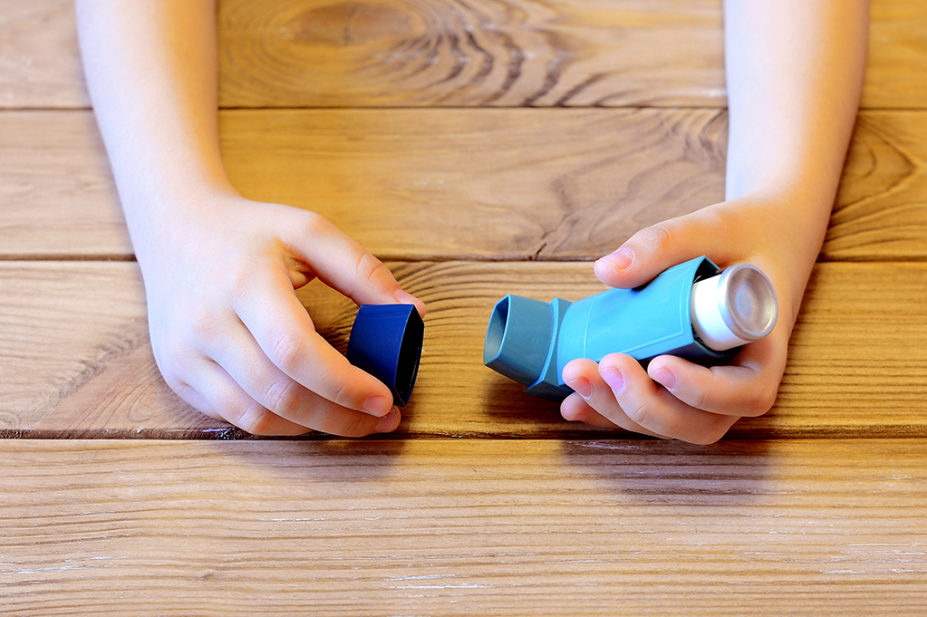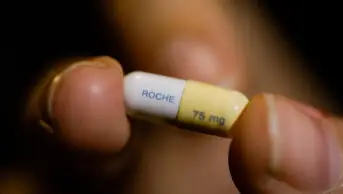
Shutterstock.com
Adding the monoclonal antibody dupilumab to standard treatment could reduce exacerbations in children with uncontrolled moderate-to-severe asthma by almost 60%, a randomised controlled trial has found.
The Liberty Asthma VOYAGE trial, published in the New England Journal of Medicine on 9 December 2021, assessed the annual rate of severe asthma exacerbations in 408 children with moderate-to-severe asthma aged 6–11 years over a period of 52 weeks.
The participants were randomised to receive either a subcutaneous injection of dupilumab or a matched placebo every two weeks, in addition to a stable dose of standard background therapy.
When screening for inclusion in the trial, researchers required patients to have at least a three-month history of receiving either a medium-dose inhaled glucocorticoid in combination with a second controller; or a high-dose inhaled glucocorticoid alone; or in combination with a second controller at a dose that had been stable for at least one month before screening, the trial paper said.
The researchers found that, in asthma patients with markers of type 2 inflammation in their airways, the annual rate of severe asthma exacerbations was 0.31 in those who received dupilumab (95% confidence interval [CI], 0.22–0.42), and 0.75 in those who received placebo (95% CI, 0.54–1.03).
This equated to a relative risk reduction in the dupilumab group of 59.3% (95% CI, 39.5–72.6; P<0.001).
Type 2 inflammation is a type of allergic response that can cause increased asthma exacerbations, with markers including elevated levels of eosinophils and/or elevated levels of nitric oxide in exhaled air.
The researchers also found that the drug improved lung function, as measured by forced exhalation, and resulted in significantly better asthma control than placebo, as assessed by standardised questionnaires administered by trained interviewers.
Dupilumab was not effective for the small number of children in the trial who did not have evidence of type 2 inflammation which, the authors said, was consistent with expectations.
Leonard Bacharier, an asthma specialist at Monroe Carell Jr. Children’s Hospital at Vanderbilt, in the United States, and the international lead investigator for the trial, described the study results as a “really important advance” for children with moderate-to-severe asthma.
Bacharier said that this was the “first study of its kind” in children aged 6–11 years to demonstrate that a biologic improved asthma exacerbations, lung function and asthma control.
“We were not surprised, because dupilumab was very effective in clinical trials in adults and adolescents, but we were delighted with the results and the hope they bring to children and their families,” he continued.
Lynn Elsey, lead respiratory/severe asthma pharmacist at Wythenshawe Hospital, Manchester University NHS Foundation Trust, described the trial results as “very positive”.
“[They] give an effective treatment option for paediatric asthma, where the options are limited both for biologics and inhaled therapies,” she said.
“It is vital that we tackle poor asthma control as early as possible to reduce the impact on lung function and risk of future obstructive lung disease. It will also lead to reduced exposure to oral corticosteroids and risk of side effects these can cause,” she added.
Dupilumab has recently been recommended by the National Institute for Health and Care Excellence for people aged 12 years and over as “an add-on maintenance therapy” to treat severe asthma with type 2 inflammation that is inadequately controlled, despite maintenance therapy with high-dose inhaled corticosteroids in addition to another maintenance treatment.
The ‘Technology appraisal guidance‘, published on 8 December 2021 by the National Institute for Health and Care Excellence, says that the drug should only be given if the dosage used is 400mg initially, followed by 200mg subcutaneously every other week, if the patient follows an optimised standard treatment plan, has a blood eosinophil count of 150 cells per microlitre or more and fractional exhaled nitric oxide of 25 parts per billion or more, and has had at least 4 or more exacerbations in the previous year.
However, Elsey pointed out that the approval was limited to the 200mg dose of the drug and did not include the 300mg dose licensed for those on maintenance steroids or those with severe nasal polyps, chronic rhinosinusitis or moderate-to-severe dermatitis.
“This does limit the patients it can be used in, but we were also surprised that it was approved for eosinophils above 0.15 which is lower than the anti-IL5 biologics,” she added.
“It will offer a new treatment option for those patients not eligible or suitable for the currently available monoclonal antibodies and help us further reduce exposure to steroids.”
Read more: Uncontrolled asthma: assessment and management


